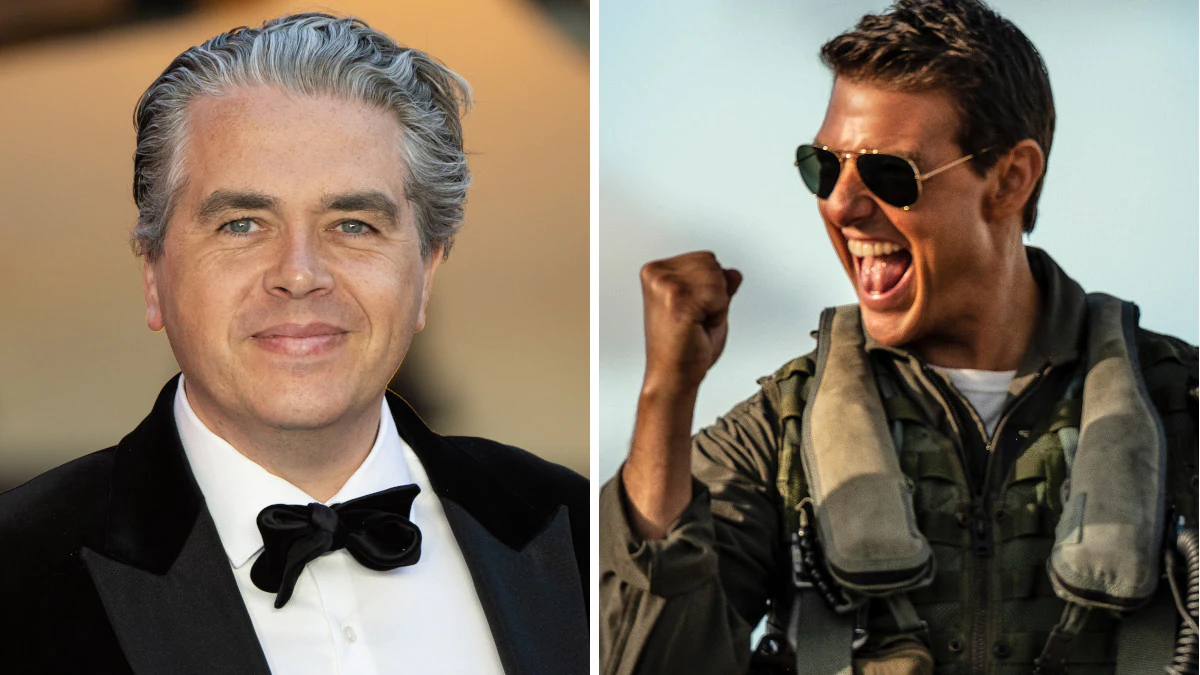“Top Gun: Maverick” is a miraculous achievement, as is evidenced in the fact that it recently broke the $1 billion box office milestone. One of movie’s many secret weapons is its music, which is credited to original composer Harold Faltermeyer, Hans Zimmer and Lady Gaga, with the music produced by “Mission: Impossible – Fallout” composer Lorne Balfe.
Coming 36 years after the original “Top Gun,” which itself helped define a movie-going era, this new Tom Cruise-starring juggernaut could have slipped into pointless nostalgia – but doesn’t. Credit where it’s due: The music, which includes aural motifs from the original along with one key soundtrack cut (“Danger Zone” by Kenny Loggins, naturally), is one of its all-new flavors. A wonderful mix of Zimmer and Faltermeyer’s scoring sensibilities, the film’s soundtrack is rounded out with some heartfelt emotionality from Gaga’s songs.
spoke to Balfe about what it was like mixing these different tones and voices, the difficulty of balancing the old and the new and a little bit about his music for the “Mission: Impossible – Dead Reckoning, Part One” trailer, which is out now (and whose music you can get on Spotify).

You’re credited as music producer. What does that mean, exactly?
It means wrangling three of the biggest names in the world – Lady Gaga, Harold Faltermeyer and Hans Zimmer. It means writing. I knew Hans because I’ve worked with him for 15 years. Jerry Bruckheimer I’ve worked with lots of times. And then Tom and McQ [“Top Gun: Maverick” screenwriter and “Mission: Impossible – Dead Reckoning, Part One director Christopher McQuarrie], we both go back. That was the connecting tissue. Producing it really means trying to get everybody’s voices together. And we were separated – we were all different parts of the world; COVID was stopping things, even recording the music. We had to record remotely. Everybody was recording in their sitting rooms. There was no orchestra to record because COVID locked us down. Basically that’s what it means. It means we’re working with everybody, wrangling everybody and making sure that we’ve got connective tissue throughout the whole score.
What was it like for you to balance nostalgia and emotion and all of the things that are competing for attention in the score?
We’ve had quite a few different approaches to it. I think it’s interesting with the things [that] changed, especially with “Dark Star” [a cue at the beginning of the movie when Maverick takes out an experimental plane]. It was a cue that we were all struggling with for a long time. Things changed because we were always looking at it as an action queue, and it’s not. Tom and Chris [McQuarrie] had mentioned the fact that it’s fun, this is somebody pushing the limits.
Musically, we then looked at it and thought about the fact that you’ve got this amazing, nostalgic theme, Harold’s “Top Gun” theme. And we don’t need to play the theme all the time; we could just do three notes, and those three notes trigger enough for those that have watched the original movie. It also gives the new generation that is watching, if they’ve not seen the prior one, a sense of heroism that they can grab onto.
Then, of course, the Lady Gaga song was a massive change of direction that helped us because [the movie] was missing the heart. When she wrote the song and we started incorporating it into the score, that was replacing a lot of other musical moments that we had, because this was this was not necessarily a love song. It was a love letter to aviation, which is what the film was about.
Were you tempted at all to try to throw in any of the other songs from the original movie?
No. It’s interesting, because I think a few people have been saying about “Take My Breath Away“: Why is that not in the movie!? But it doesn’t belong there. The different love stories are different; why would it belong there? It wouldn’t have made any kind of sense. But definitely using “Danger Zone” was something that you can take the baseline and have fun with it. That song belongs in both movies.
The album is out now and it’s terrific, but there’s not too much score. Is there going to be a fuller album of score material?
Yeah, if anybody wants it. We looked at it how iconic that first [“Top Gun”] album was. We were really trying to go through and make sure that the songs were there, that there wasn’t too much score, and it wasn’t too overwhelming. It gives us enough permission for us to release a soundtrack.
How is it going with “Mission: Impossible – Dead Reckoning, Part One?” We’ve now all heard your music created for the teaser trailer…
When we recorded the trailer, there was a 70-piece orchestra and a choir. And listen, I started writing on “Mission: Impossible – Dead Reckoning, Part One” 3.5 years ago. I started when Chris took me out for dinner, and he was talking about it and the storyline, and he is very visual with his descriptions. You get very excited, and the inspiration comes. As soon as they were filming, he’d send me one page or a paragraph from the script, and I’d be like, “Boom! That’s it.”
“Top Gun: Maverick” is out everywhere now. “Mission: Impossible – Dead Reckoning, Part One” hits theaters on June 28, 2023.



